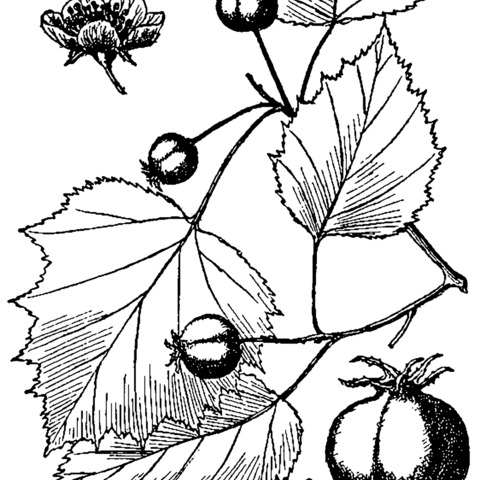Arborescent shrub or more often a small tree to 7 m; twigs slender, armed with stout, dark purple thorns 3–5 cm; lvs broadly ovate or deltoid, truncate or subcordate or rarely rounded at base, sharply and deeply serrate and divided into 4–5 pairs of triangular lateral-lobes, 4–6 × 3.5–5 cm, or larger on vegetative shoots, essentially glabrous from the first, thin but firm, yellow-green, crisped at the edges when mature; fls ca 2.5 cm wide, in mostly 4–7-fld glabrous cymes; sep laciniately glandular-serrate; fr bright red, 1.3–1.7 cm thick, succulent, with a very broad, nearly sessile cal; nutlets 5. Mostly in limestone regions; s. Ill. to se. Kans. and n. Ark.
A small tree. It grows 6 m high. The trunk is 20 cm across. The crown is broad and round. It is dense with spreading branches. The leaves are 6-7.5 cm long and 5-6 cm wide. They are oval with a short-pointed tip. There are several shallow lobes and double teeth along the edge. They are reddish when young and become dark green above and paler underneath. They become orange or red in autumn. The flowers are large. They are 2-2.5 cm wide with 5 white petals. They occur as 4-7 flowers in clusters. The fruit are large and dark red. They are 19 mm across and round but flattened at the ends. They are shiny dark red with pale dots. There are 5 seeds inside.


